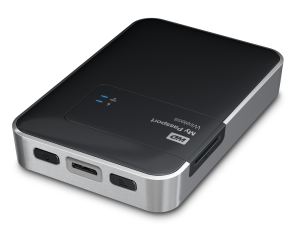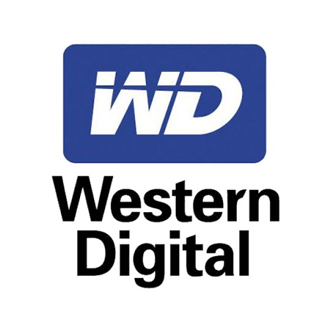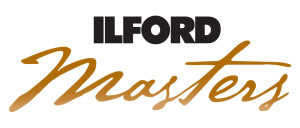
A new hard drive from WD just arrived – the new My Passport Wireless. I have the 1TB version and what struck me when I took it out of the box was its light weight. I expect any portable single disk HD will weigh much the same but nevertheless, I immediately noticed how modest in size it was – the specs say it weights only 270g.
You can use this HD in various ways:
– As a portable card archive – insert an SD card and the images are immediately sucked off into a dedicated SD card folder on the hard drive. In the field this could be a great way to back up files when you don’t have a laptop handy. I suspect that you’d have to be careful with this drive on location – it’s not ruggedised and actively spinning HDs do not take kindly to being moved or jolted when operating.
I see this feature as being handy to back up files from cards, but not to allow re-use of the cards. There is no direct image verification* so you’d be running blind, trusting that the images were all correctly copied across. Given that the unit is battery powered, this could be a device to take on a multi-day trip when you know you’ll not have a laptop with you.
Copying times are a little on the slow side – using a high end SD card it took slightly over 6 mins to copy 3.3GB of data (108 DNG) files from the card to the Passport. That’s a little under 10MB/s with some of that time being some sort of start up routine since the actual copying light did not start to flash for about 30 secs after I inserted the card. It’s a tolerable performance but a long way short of the 100MB/s I get when using the SD slot in a MacBook Pro with an internal SSD drive. Performance – modest, convenience – excellent.
– As a local wireless hard drive – not much different to connecting by USB cable although this allows access to a sophisticated dashboard and configuration back end where you can set security options etc. I clocked the data rate at about 9MB/s which is adequate but obviously not up to USB speeds.
– As a NAS – connect the Passport to your own local network and it acts as a Network Attached Storage device, accessible from any computer on the same network. This could be very useful for me personally when I conduct workshops – the Passport can act as a shared drive for guests to access workshop sample files, download Tutorial PDFs and videos and upload their own images for sharing amongst the group.
– As a media server able to stream images, music and movies to certain home devices such as XBox, DLNA2 devices and so on.
– As a normal external hard drive connected by USB. This offers the best transfer speeds – I measured it at just under 100MB/s – but this is no different to any other bus-powered portable HD.
How will I use it? I expect it will replace one of my existing travel hard drives from now on, one being my 4TB Passport Pro and the other, previously, being a 1TB WD Firewire drive which I used to connect through the Thunderbolt adapter. With only two USB sockets in MBPs these days, *not* having to use them up to plug in external drives is a bonus. The 4TB Passport Pro connects through Thunderbolt and the new Passport Wireless does not need a socket.
The Pro will be my main high performance drive and the Wireless will act as the second backup drive since my MBP has limited internal storage. In addition, it will get used as a data hub for workshops so I can share files without having to pass around a datastick.
More details here: WD Passport Wireless
*UPDATE: On further investigation, you can verify images which were downloaded directly off SD cards by using a free iOS or Android device called My Cloud which allows your mobile device to directly access the Passport. This allows you to browse the files on the HD and even open them if necessary. The only slight drawback is that it will not preview raw files, only Jpegs but you can at least confirm that the files are there. If you were to shoot raw+Jpeg you would be able to see the Jpeg files as a kind of raw proxy – maybe shoot small Jpegs so as not to take up too much card space. Using the Passport and a smartphone would be a lot lighter than taking a laptop if you were limited by an airline baggage allowance for example.





Cuba – October 2017
/in Workshop /by nickrainsJoin Christian Fletcher and I for an awesome 9 night photography experience in exotic Cuba.
A Sensible Backup Strategy
/in News /by NickI have added a new article on backup – how to set up a simple but robust system using one external hard drive, one NAS box and one software application.
Leica SL (Type 601) – updated
/in News /by NickHere it is, hot off the press, the totally new Leica SL. What does SL stand for? There are many theories but the one I like is that it’s not an SLR (because it’s got no mirror) so therefore it’s an SL.
Regardless of the name, the spec sheet is impressive:
24MP
ISO to 50000
Very low noise – ISO6400 is stunningly good
Exposure times up to 30 minutes
11FPS with a 30 image buffer
Autofocus that is blindingly fast, as well as super accurate
Dynamic focus tracking
Focus Peaking for manual focus
GPS
Wireless image transfer
Timelapse
Rock solid construction
New lenses – the internally stabilised Vario-Elmarit 24-90 f2.8-4 is available right away
Will take M lenses via adapter, soon to be adapters for other lenses
Video – if you use the MP4 codec the SL will shoot full 1080p HD at 120fps and will record 4K at 24, 25 and 30fps.
Read more →
New Leica T lenses proving to be excellent.
/in News /by NickThe new lenses for the T-System which were released at Photokina are exceeding all my expectations. They are both stunningly sharp, right into the corners and really extend the use of the camera. I’m using the touch screen auto focus, as well as the EVF, but I find that working off a tripod and being able to tap the rear screen for to focus is working very nicely. All the shots are focussed where I wanted them to be. Judging manual focus with the longer lens is a little tricky because the focus ring is very sensitive but with the AF being so accurate this is a non-issue.
The 11-23 is the equivalent of a 16-35 and the 55-135 is the equivalent of a 70-200. Check out my Facebook page for more examples as I shoot them.
Namibia Workshop 2016
/in Products, Workshop /by NickFully Booked. Please email me to be added to the wait list – the departure date is a long way off so it is quite possible that a place will become available.
Join Christian Fletcher and myself for 12 day safari through one of the world’s most photogenic locations – Namibia. We will be staying in all the best hotels, flying in our very own fleet of five aircraft and visiting the iconic locations of Kolmanskop, Sossusvlei and other sensational places.
Bunker Bay Workshop V2.0
/in Slideshow /by NickBunker Bay Workshop with Christian Fletcher and Nick Rains – Our most popular workshop for 6 consecutive years!
Now completely reimagined and expanded to include four huge days of photography in and around the spectacular south-west region of WA. Nick and Christian will be there to assist you in taking the best photos possible in the conditions and then taking you through post-processing all the way to final print. This is the real deal – exactly how they produce the kinds of images that they are known for.
Click here for full details…
ILFORD Master
/in News /by NickNick Rains has been added to the list of ILFORD Masters around the globe. He now sits alongside such industry luminaries as Sebastiao Salgado, Eric Meola and Gregory Heisler.
Nick chooses to print on ILFORD Gold Fibre Silk for his exhibition prints and on ILFORD Smooth Pearl for production prints using an Epson Stylus Pro 3880 or a Canon iPF6300
WD Passport Wireless
/in News /by NickA new hard drive from WD just arrived – the new My Passport Wireless. I have the 1TB version and what struck me when I took it out of the box was its light weight. I expect any portable single disk HD will weigh much the same but nevertheless, I immediately noticed how modest in size it was – the specs say it weights only 270g.
You can use this HD in various ways:
– As a portable card archive – insert an SD card and the images are immediately sucked off into a dedicated SD card folder on the hard drive. In the field this could be a great way to back up files when you don’t have a laptop handy. I suspect that you’d have to be careful with this drive on location – it’s not ruggedised and actively spinning HDs do not take kindly to being moved or jolted when operating.
I see this feature as being handy to back up files from cards, but not to allow re-use of the cards. There is no direct image verification* so you’d be running blind, trusting that the images were all correctly copied across. Given that the unit is battery powered, this could be a device to take on a multi-day trip when you know you’ll not have a laptop with you.
Copying times are a little on the slow side – using a high end SD card it took slightly over 6 mins to copy 3.3GB of data (108 DNG) files from the card to the Passport. That’s a little under 10MB/s with some of that time being some sort of start up routine since the actual copying light did not start to flash for about 30 secs after I inserted the card. It’s a tolerable performance but a long way short of the 100MB/s I get when using the SD slot in a MacBook Pro with an internal SSD drive. Performance – modest, convenience – excellent.
– As a local wireless hard drive – not much different to connecting by USB cable although this allows access to a sophisticated dashboard and configuration back end where you can set security options etc. I clocked the data rate at about 9MB/s which is adequate but obviously not up to USB speeds.
– As a NAS – connect the Passport to your own local network and it acts as a Network Attached Storage device, accessible from any computer on the same network. This could be very useful for me personally when I conduct workshops – the Passport can act as a shared drive for guests to access workshop sample files, download Tutorial PDFs and videos and upload their own images for sharing amongst the group.
– As a media server able to stream images, music and movies to certain home devices such as XBox, DLNA2 devices and so on.
– As a normal external hard drive connected by USB. This offers the best transfer speeds – I measured it at just under 100MB/s – but this is no different to any other bus-powered portable HD.
How will I use it? I expect it will replace one of my existing travel hard drives from now on, one being my 4TB Passport Pro and the other, previously, being a 1TB WD Firewire drive which I used to connect through the Thunderbolt adapter. With only two USB sockets in MBPs these days, *not* having to use them up to plug in external drives is a bonus. The 4TB Passport Pro connects through Thunderbolt and the new Passport Wireless does not need a socket.
The Pro will be my main high performance drive and the Wireless will act as the second backup drive since my MBP has limited internal storage. In addition, it will get used as a data hub for workshops so I can share files without having to pass around a datastick.
More details here: WD Passport Wireless
*UPDATE: On further investigation, you can verify images which were downloaded directly off SD cards by using a free iOS or Android device called My Cloud which allows your mobile device to directly access the Passport. This allows you to browse the files on the HD and even open them if necessary. The only slight drawback is that it will not preview raw files, only Jpegs but you can at least confirm that the files are there. If you were to shoot raw+Jpeg you would be able to see the Jpeg files as a kind of raw proxy – maybe shoot small Jpegs so as not to take up too much card space. Using the Passport and a smartphone would be a lot lighter than taking a laptop if you were limited by an airline baggage allowance for example.
AIPP Travel Photographer of the Year 2014
/in News /by NickNick has been awarded the title of Travel Photographer of the Year by the AIPP at the Australian Professional Photography Awards, Australia’s most prestigious pro event. The images in the title above are from the entries but all four winning images are posted below, with their awards. You can click on the images to see hi-res versions.
New Dehli – Gold
Taj Mahal – Gold
Taj Mahal – Gold Distinction
Chandelao – Silver
Bhutan – March 2015
/in News /by NickPhoto Tours Abroad have added a Bhutan trip to their catalogue and have invited me to be the Guest Artist. If you fancy a top quality, small group photo trip to Bhutan then you can find full details here.
Bhutan 2015
The group will be a max of 6 photographers and based on previous trips of this type, that’s a perfect number for maximum flexibility and comfort. These trips are all about getting great images, everything we do is based around being in the right pace at the right time. To this end we hire experienced guides who are also ‘fixers’ so if we need access to a certain place we can usually get permission – or at least ask in the correct manner.